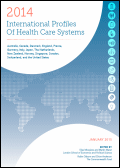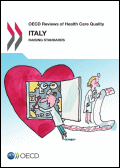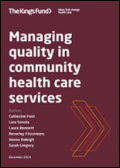 SELECTED FOR YOU... FEBRUARY 2015
SELECTED FOR YOU... FEBRUARY 2015
 books of the month
books of the month
 watch on health economics
watch on health economics
All the Selected for you
BOOKS
The LSE Companion to Health Policy
McGuire A., Costa-Font J.
Cheltenham : Edward Elgar, 2012
The LSE Companion to Health Policy covers a wide range of conceptual and practical issues from a number of different perspectives introducing the reader to, and summarising, the vast literature that analyses the complexities of health policy. The Companion also assesses the current state of the art.
International Profiles of Health Care Systems, 2014.
Commonwealth Fund. New York NY. USA
New York : The Commonwealth Fund, 2015/01
This publication presents overviews of the health care systems of Australia, Canada, Denmark, England, France, Germany, Italy, Japan, the Netherlands, New Zealand, Norway, Singapore, Sweden, Switzerland, and the United States. Each overview covers health insurance, public and private financing, health system organization and governance, health care quality and coordination, disparities, efficiency and integration, use of information technology and evidence-based practice, cost containment, and recent reforms and innovations. In addition, summary tables provide data on a number of key health system characteristics and performance indicators, including overall health care spending, hospital spending and utilization, health care access, patient safety, care coordination, chronic care management, disease prevention, capacity for quality improvement, and public views.
OECD Reviews of Health Care Quality: Italy 2014: Raising Standards.
Organisation de Coopération et de Développement Economiques. (O.C.D.E.). Paris. FRA
Paris : OCDE, 2015/01
This report reviews the quality of health care in Italy, seeks to highlight best practices, and provides a series of targeted assessments and recommendations for further improvements to quality of care. Italy's indicators of health system outcomes, quality and efficiency are uniformly impressive. Life expectancy is the fifth highest in the OECD. Avoidable admission rates are amongst the very best in the OECD, and case-fatality after stroke or heart attack are also well below OECD averages. These figures, however, mask profound regional differences. Five times as many children in Sicily are admitted to hospital with an asthma attack than in Tuscany, for example. Despite this, quality improvement and service redesign have taken a back-seat as the fiscal crisis has hit. Fiscal consolidation has become an over-riding priority, even as health needs rapidly evolve. Italy must urgently prioritise quality of its health care services alongside fiscal sustainability. Regional differences must be lessened, in part by giving central authorities a greater role in supporting regional monitoring of local performance. Proactive, coordinated care for people with complex needs must be delivered by a strengthened primary care sector. Fundamental to each of these steps will be ensuring that the knowledge and skills of the health care workforce are best matched to needs.
Managing quality in community health care services.
Foot C., Sonora L., Benett L., et al.
Londres : The King's Fund, 2014/12
Community health services provide vital care for millions of people. Children, families, people with injuries or longterm conditions, older people, and people in their last years of life all use this huge range of services. Demand for community services is growing as more and more people are cared for closer to home. These community services are a key component of our health and care system, but they have been too often overlooked by the national focus on quality. This report uses surveys, interviews and document analysis to gauge how community providers are defining, measuring, managing and improving quality. Our findings show that: there are many examples of local innovation in measuring quality and some robust systems of quality governance in place; community service providers feel that poor availability of information is constraining quality improvement; staff shortages and workforce concerns pose serious risks to delivering quality care as do growing financial, demand and capacity pressures. At a national level, our lack of knowledge about quality in community services is a dangerous blind spot. If policy-makers are truly committed to quality and transparency – and to bringing more care closer to home – then action.




